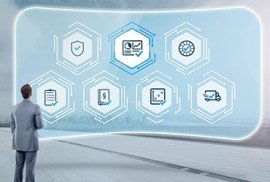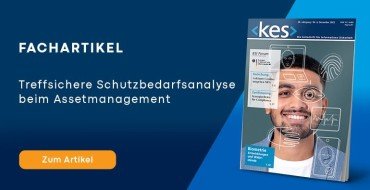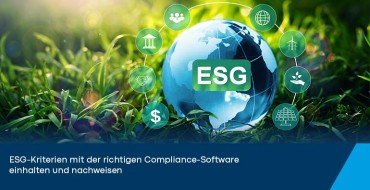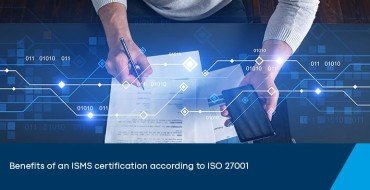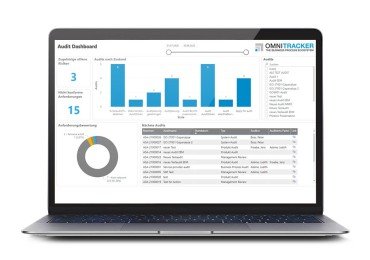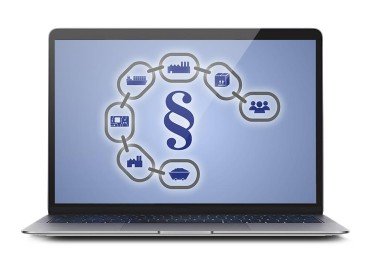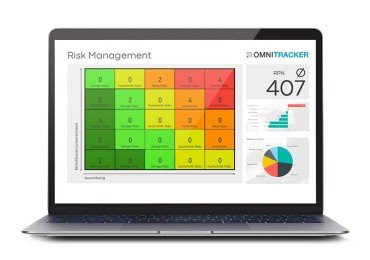GRC is the combination of governance, risk and compliance and therefore comprises the three most important levels of action that are necessary for the successful and standard-compliant management of a company. Governance refers to structured corporate management with effective decision-making, transparency and responsibilities; compliance relates to the company’s actions in accordance with the rules, while risk refers to the company-wide and uniform risk management.
The holistic management approach is intended to cover a company’s risk prevention, policy control and protection management.
Your benefits from governance, risk and compliance management | GRC
Save costs and time with GRC in order to focus on your core business
Efficient management

Certifications according to ISO and standards

Compliance with laws and regulations

Reduction of operating expenses
Do you experience this too?
The challenges in the daily business of management
You arrive at the office eager to get on with important tasks and the day-to-day business, but various obstacles appear before you and prevent you from doing so:
- Conflicting goals between customers, suppliers, employees, etc.
- Invisibility with regard to legal requirements (lack of knowledge)
- Compliance with multiple normative requirements (ITIL®, ISO, and COBIT)
- Risks that are difficult to assess (financial, market, reputation, etc.)
- Derivation and formulation of clear requirements
- Exchange of information (in the right place at the right time)
- Increasing lack of transparency as the company grows
What are the requirements for good corporate management in GRC?

Managing a company successfully means achieving various defined goals and driving the company forward. But what exactly constitutes good corporate management? Which requirements does it have to meet?
To discuss this, we shall look at the words individually:
Corporate management is about running a company. In this context, the company refers to your core business, your pursuit of profit, but also your entire company as an autonomous economic unit.
Management thereby stands for authority and orientation. It is the management of the company, which also inherently serves as a role model.
Requirements always imply a demand—on oneself or others—to achieve something. The demand on a corporate management is therefore to achieve a goal, a milestone, or a state.
However, good corporate management does not want to achieve just any goals, but “good” goals. These must thus benefit all interested parties such as customers, employees, suppliers, etc.
In practice, good corporate governance must combine the following points:
- Legally compliant
- Value-oriented
- Sustainable
- Ethically sound reputation
- Developing its own corporate culture
- Finding the right strategy
- Profitable growth
- Continuous improvement
How you can solve your challenges with GRC software.
We’ll show you how to get your problems under control in a 30-minute presentation.
What does Governance, Risk and Compliance | GRC mean?
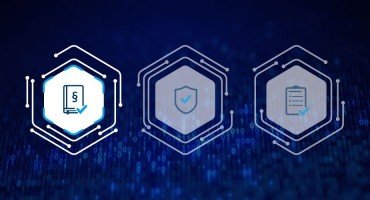
Governance
The term governance refers to the holistic management of the company. This includes guidelines and management, risk prevention and policy control.
The organizational regulatory framework in terms of requirements, laws, and standards must be translated into corporate goals and strategies as well as internal guidelines. Binding internal guidelines and processes can then be derived from this. In the area of governance, the internal control system (ICS) and compliance management are also defined, and risk management is integrated across processes and departments.
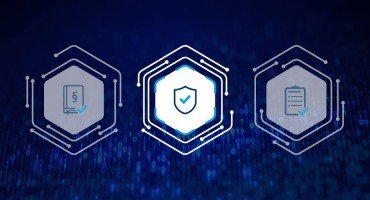
Risk
The risks aspect covers the recognition of potential damage, hazards, and risks, but also of opportunities.
To ensure the achievement of corporate goals, their risk appetite and potential impact on the protection of corporate values must be assessed. Risk, emergency, and damage management measures must be implemented, tracked and reviewed. Another important task of the risk department is to provide feedback on hazards and the current risk situation to the corporate management through analyses and reports.
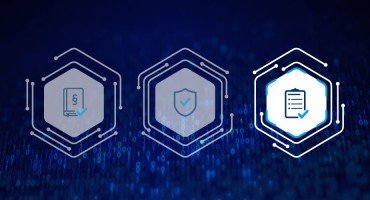
Compliance
Compliance is the level of action that deals with adherence to norms, standards, and laws, i.e. conformity.
The specifications defined in governance must be adhered to for all processes by setting and implementing detailed requirements throughout the company. This is monitored, documented, and flexibly adapted to changing requirements. The aim is to eliminate non-conformities, continuously improve the implemented requirements and increase efficiency within the company as a result. Additionally, company-wide transparency is to be created and feedback is to be provided to the corporate management.
What is the organizational framework for governance, risk and compliance management | GRC?

The organizational regulatory framework includes all legal and industry-specific regulations, requirements, norms, standards, guidelines, etc., which are translated into strategies, measures, objectives, and internal guidelines and rules in the governance area. To minimize risks, all these provisions must be taken into account and complied with.
These include:
- Laws and regulations
such as the GDPR, the Whistleblower Protection Act, and the CSRD Directive - Norms and standards
such as ISO 9001, ISO 27001, and various ANSI and DIN standards - Best practices
such as the ITIL guidelines, the CoBIT framework, and BSI IT-Grundschutz (fundamental IT protection) - Industry-specific requirements, that are summarized in various documents,
such as the B3S catalog, the MaRisk circular, or TISAX
The use of modular and flexible GRC software that can be easily expanded by individual specifications via open interfaces is helpful here. In this way, the complexity of the content-related network of relationships can be counteracted and content such as data or requirements catalogs can be added at a later date without any problems
One software solution for all GRC challenges.
Who is responsible for GRC?

Managers from various departments (compliance, IT, finance, etc.) and designated teams are responsible for creating GRC plans and strategies. However, every single employee should be responsible for implementing and complying with these in their everyday work: the so-called “people first” approach.
Training should be used to raise awareness among all employees so that everyone is interested and empowered to ensure that the company operates in a sustainable, compliant and low-risk manner. The responsibility to identify and prevent potential risks is therefore shouldered equally by practically every employee.
Every employee shares responsibility for GRC.
What are the benefits of governance, risk and compliance management | GRC?

With an established GRC, you benefit from a wide range of advantages and synergy effects that go far beyond a holistic overview of risks and compliance requirements. For example, an integrated GRC tool can support the PDCA cycle for certifications, optimize and simplify audit processes, and help with the introduction of an ISMS. This significantly increases the efficiency of your company.
Your GRC software solution in just 5 steps.
Send us an individual enquiry according to your needs.Our GRC solution OMNITRACKER Governance, Risk and Compliance Center
With the OMNITRACKER Governance, Risk and Compliance Center, we support you in every management decision and help you to operate your company profitably, in compliance with the law and standards.
Relevant information on the topic of GRC | Governance, Risk und Compliance
Specialist article: Protection needs analysis
Protection requirement analyses are essential for the efficient protection of all company assets—and there is naturally a strong overlap with asset management.
Compliance software and ESG
Whether it’s the EU taxonomy, supply chain due diligence legislation, or simply consumer demand: Proving sustainability transparently is becoming increasingly important for thousands of companies in every sector.
Benefits of an ISMS with ISO 27001 certification
Certification according to ISO 27001 requires a functioning information security management system (ISMS). For some business sectors, compliance with certain ISO/IEC standards is mandatory. The benefits of an ISMS are many, but at its core is: increased information security.
GRC in practice
Comply with standards
New or revised norms, standards, and laws are regularly published that you must or want to comply with in your organization. The associated audits are also becoming more and more extensive.
Comply with LkSG
The Supply Chain Due Diligence Act (Lieferkettensorgfaltspflichtengesetz | LkSG) obliges companies to adequately analyze the human rights and environmental due diligence obligations within their supply chain and to assess their risks.
Minimize risks
With a risk management solution, you can collect, evaluate, manage, and document all risks at all levels. Automated workflows ensure that analyses, assessments, monitoring, and implementation of all action steps are carried out reliably.

